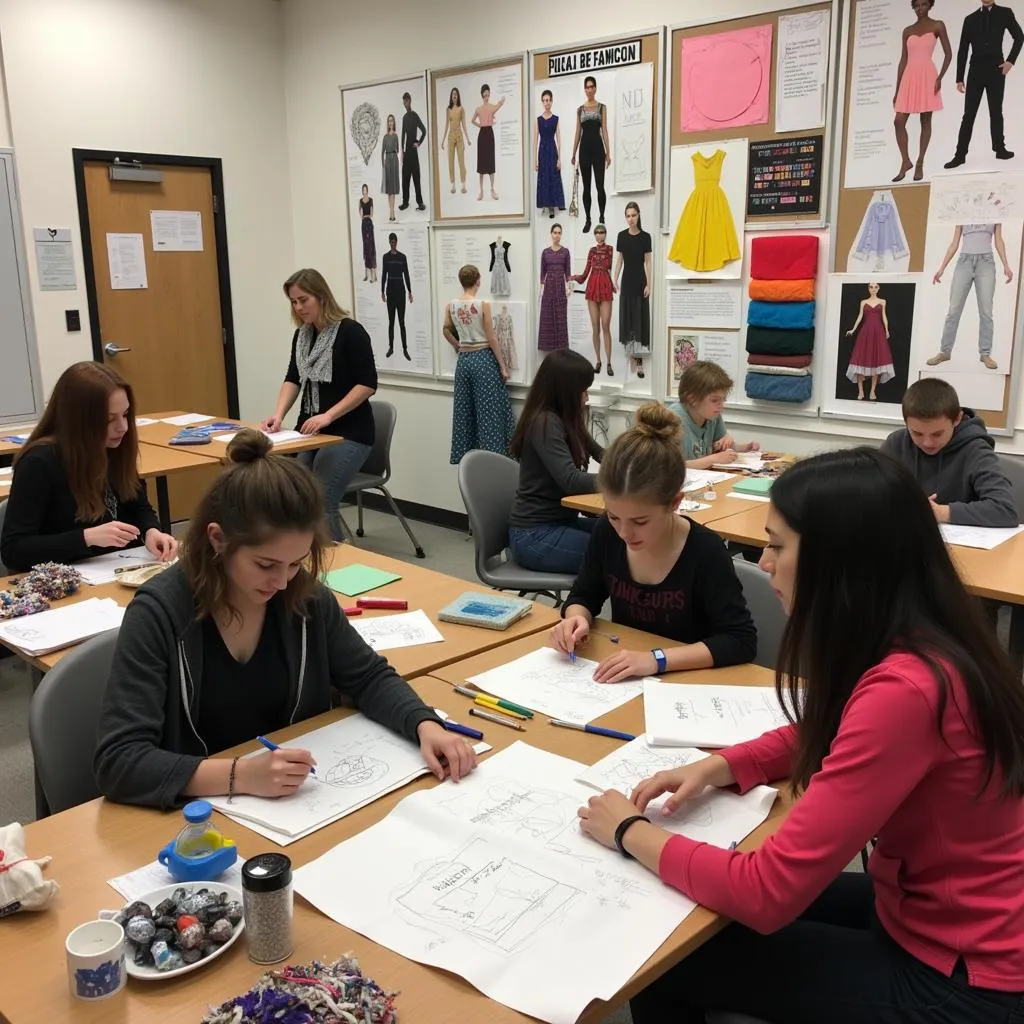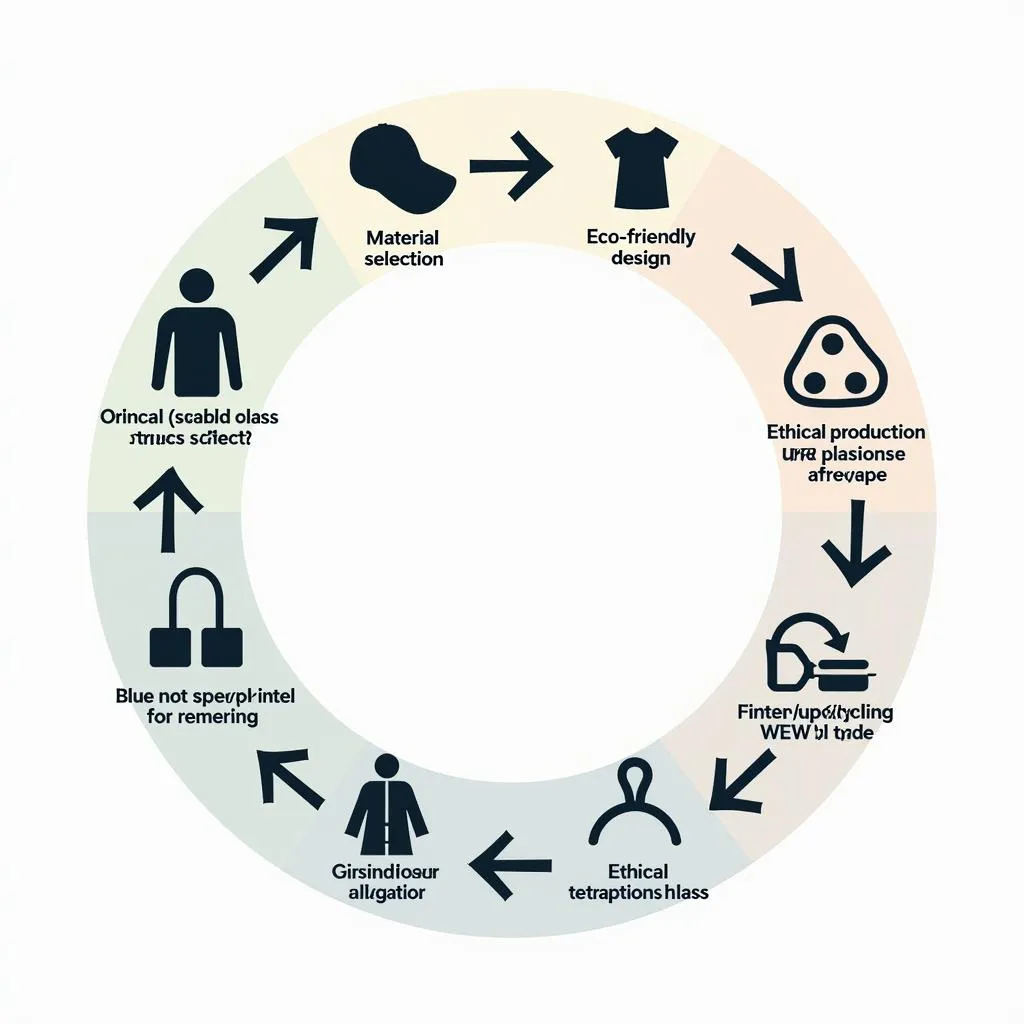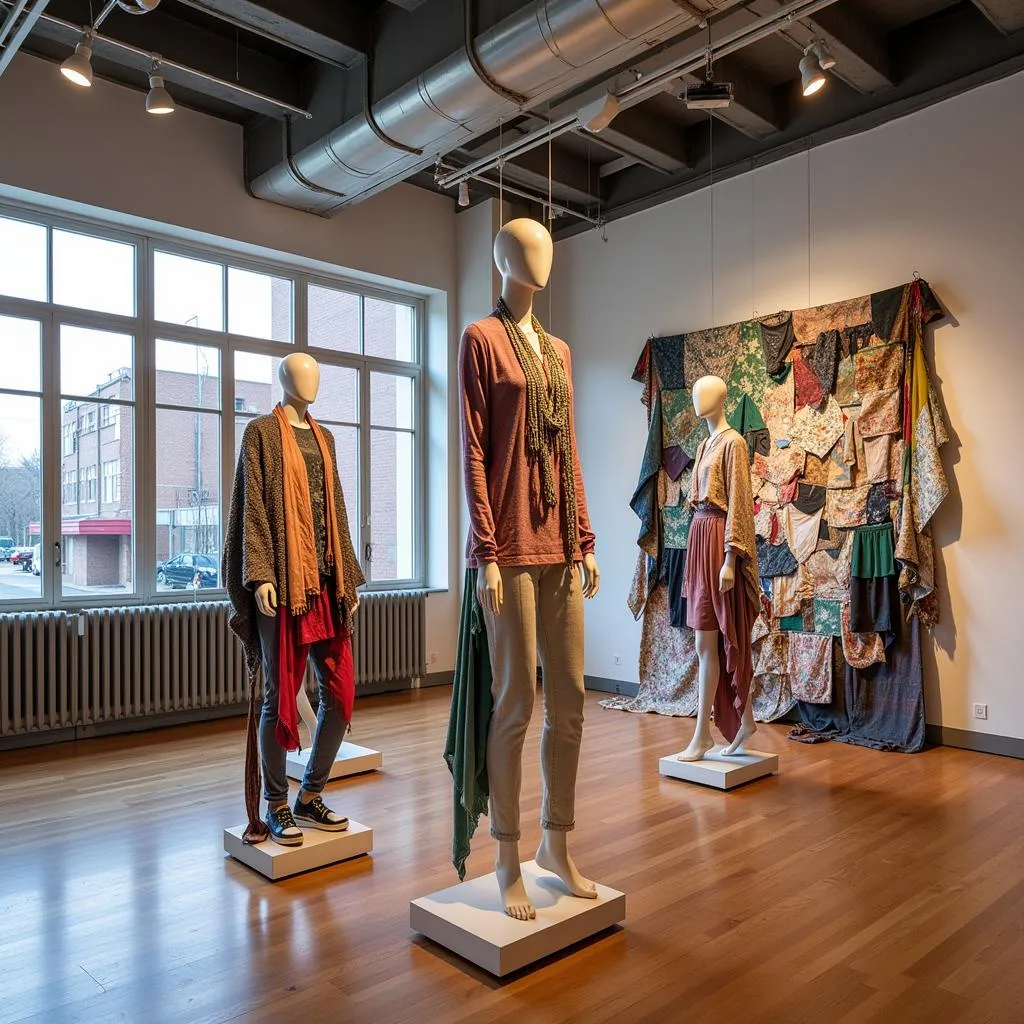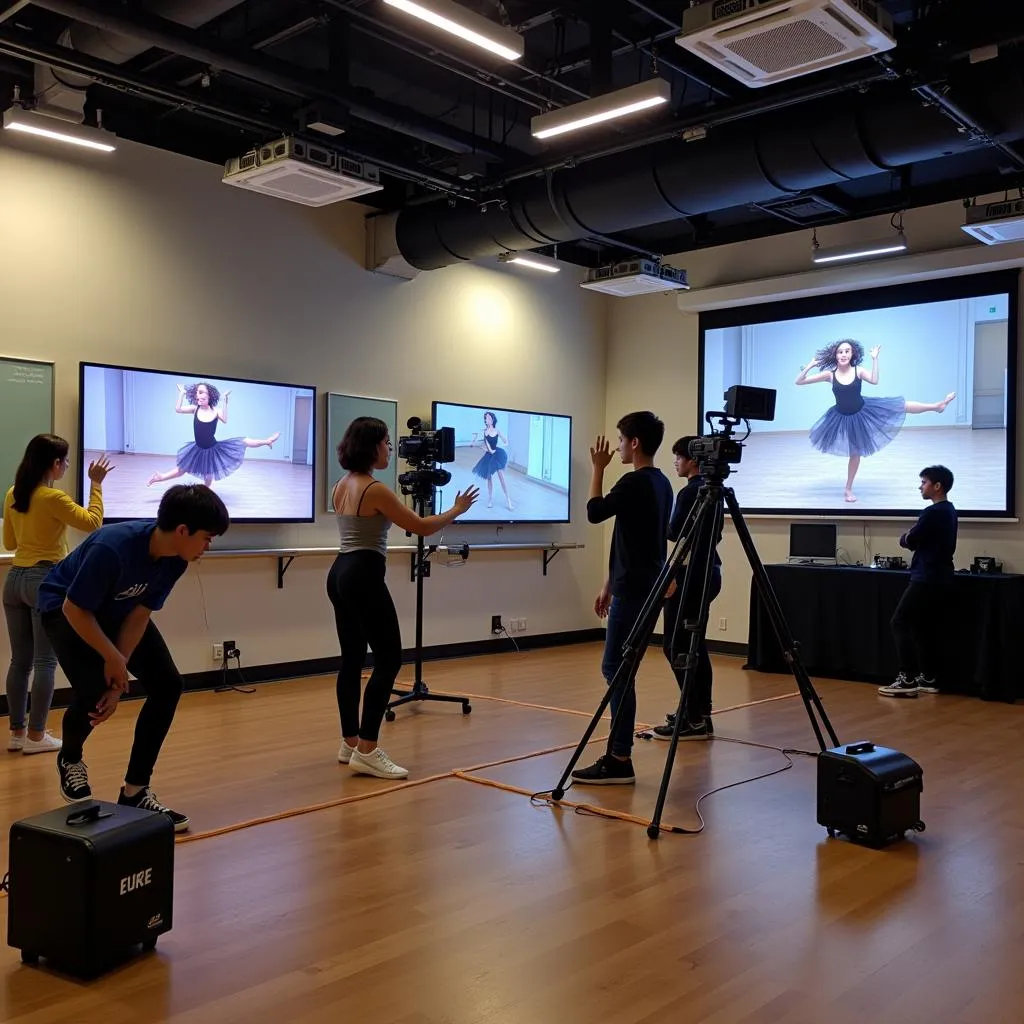The integration of sustainable fashion in art classes is an increasingly relevant topic in today’s educational landscape. As we explore this subject through an IELTS Reading practice test, we’ll delve into how art education is embracing eco-friendly fashion concepts. This approach not only enhances creativity but also promotes environmental awareness among students. The influence of traditional clothing in cultural education has paved the way for incorporating sustainable fashion practices in modern art curricula.
Let’s begin with our IELTS Reading practice test, which consists of three passages of increasing difficulty, followed by a variety of question types to test your comprehension and analytical skills.
Passage 1 – Easy Text
The Rise of Eco-Fashion in Art Education
In recent years, there has been a significant shift in the way art education approaches fashion design. The incorporation of sustainable practices has become increasingly prevalent, reflecting a broader societal concern for environmental issues. Art schools and universities are now integrating eco-friendly concepts into their curricula, teaching students not only about aesthetics and craftsmanship but also about the environmental impact of their creative choices.
This new approach encourages students to consider the entire lifecycle of their fashion creations, from the sourcing of materials to the eventual disposal of garments. Many institutions are partnering with local recycling centers and sustainable fabric suppliers to provide students with eco-friendly materials. This hands-on experience with sustainable resources helps students understand the practical implications of eco-fashion.
Moreover, courses now often include modules on upcycling, where students learn to transform discarded materials into high-fashion pieces. This not only promotes creativity but also instills a sense of responsibility towards the environment. Students are challenged to think critically about waste reduction and to innovate with limited resources.
The integration of sustainable fashion in art classes has also led to an increased focus on traditional techniques that are inherently eco-friendly. Skills such as natural dyeing, hand-weaving, and zero-waste pattern cutting are being revived and taught alongside modern design technologies. This blend of old and new approaches provides students with a well-rounded education that prepares them for the future of fashion design.
As a result of these changes, graduates from art programs are entering the fashion industry with a strong foundation in sustainable practices. They are equipped to challenge conventional methods and to lead the industry towards a more environmentally conscious future. The impact of this educational shift is already visible in the growing number of eco-friendly fashion brands and initiatives launched by recent graduates.
 Integration of sustainable fashion in art education
Integration of sustainable fashion in art education
Questions 1-5
Do the following statements agree with the information given in the Reading Passage?
Write
TRUE if the statement agrees with the information
FALSE if the statement contradicts the information
NOT GIVEN if there is no information on this
- Art schools are now teaching students about the environmental impact of fashion design.
- All art institutions have their own recycling centers for fashion materials.
- Upcycling is a technique where new materials are created from scratch.
- Traditional fashion techniques are being taught alongside modern design technologies.
- The fashion industry has completely adopted sustainable practices due to recent graduates.
Questions 6-10
Complete the sentences below.
Choose NO MORE THAN TWO WORDS from the passage for each answer.
- Art education now encourages students to consider the __ of their fashion creations.
- Many institutions are forming __ with local recycling centers to provide eco-friendly materials.
- Courses often include modules on upcycling, which transforms __ into high-fashion pieces.
- Skills such as natural dyeing and __ are being revived in art education.
- Graduates from these programs are equipped to __ in the fashion industry.
Passage 2 – Medium Text
Reimagining Fashion Education: The Sustainable Approach
The fashion industry has long been criticized for its significant environmental footprint, from water pollution to textile waste. In response to these concerns, a paradigm shift is occurring in fashion education, with sustainability taking center stage. This transformation is not merely a superficial change but a fundamental reimagining of how we approach fashion design and production.
At the forefront of this educational revolution are institutions that have overhauled their curricula to place sustainability at the core of their teaching. These programs are not just adding a few eco-friendly courses to their existing offerings; they are integrating sustainable thinking into every aspect of fashion education. From the first sketches to the final runway show, students are encouraged to consider the environmental impact of their design choices.
One of the key aspects of this new approach is the emphasis on circular economy principles. Students learn to design with the entire lifecycle of a garment in mind, considering how it can be recycled, upcycled, or biodegraded at the end of its life. This holistic view challenges the traditional linear model of “take-make-dispose” that has dominated the fashion industry for decades.
Moreover, sustainable fashion education is interdisciplinary by nature. It draws on knowledge from fields such as environmental science, chemistry, and sociology to provide a comprehensive understanding of sustainability issues. Students might learn about the chemistry of natural dyes, the social impact of fair labor practices, and the ecological consequences of different fabric choices all within the same program.
The integration of technology plays a crucial role in this new educational model. Virtual prototyping and 3D modeling software allow students to experiment with designs without wasting physical materials. Blockchain technology is being explored as a means to increase transparency in the supply chain, while artificial intelligence is being utilized to optimize production processes and reduce waste.
However, this shift towards sustainability in fashion education is not without its challenges. There is a delicate balance to be struck between teaching traditional craft skills and embracing new sustainable technologies. Additionally, the fast-paced nature of the fashion industry can sometimes seem at odds with the slower, more considered approach that sustainability demands.
Despite these challenges, the benefits of this new educational approach are clear. Graduates emerge with a holistic skill set that combines creativity with a deep understanding of sustainability issues. They are equipped to become change agents in an industry that desperately needs innovation to reduce its environmental impact.
As these sustainably educated designers enter the workforce, they are already making waves. Many are starting their own eco-friendly brands or bringing sustainable practices to established fashion houses. Their fresh perspective is challenging industry norms and pushing for more responsible production methods.
The integration of sustainable fashion in art classes is more than just a trend; it represents a necessary evolution in fashion education. By equipping the next generation of designers with the knowledge and skills to create sustainably, these educational programs are helping to shape a more environmentally responsible future for the fashion industry.
 Sustainable fashion design process in education
Sustainable fashion design process in education
Questions 11-14
Choose the correct letter, A, B, C, or D.
-
The new approach to fashion education focuses on:
A) Adding a few eco-friendly courses
B) Completely redesigning the curriculum
C) Focusing only on recycling techniques
D) Ignoring traditional design methods -
Circular economy principles in fashion education emphasize:
A) Designing only biodegradable clothing
B) Focusing solely on recycling
C) Considering the entire lifecycle of a garment
D) Promoting fast fashion -
Sustainable fashion education is described as:
A) Focused only on environmental science
B) Limited to fashion design principles
C) Interdisciplinary in nature
D) Avoiding technological integration -
The main challenge in implementing sustainable fashion education is:
A) Lack of student interest
B) Balancing traditional skills with new technologies
C) Absence of suitable teaching materials
D) Resistance from the fashion industry
Questions 15-19
Complete the summary below.
Choose NO MORE THAN TWO WORDS from the passage for each answer.
Sustainable fashion education is revolutionizing the industry by integrating (15) __ thinking into every aspect of design. This approach emphasizes (16) __ principles, encouraging students to consider how garments can be recycled or upcycled. The education is (17) __, incorporating knowledge from various fields. Technology plays a crucial role, with tools like (18) __ reducing material waste. Graduates emerge as (19) __ in the industry, equipped to challenge norms and promote responsible production.
Passage 3 – Hard Text
The Confluence of Art, Fashion, and Sustainability in Higher Education
The paradigm shift towards sustainability in fashion education is not occurring in isolation; rather, it is part of a broader movement that is redefining the relationship between art, design, and environmental responsibility. This transformation is particularly evident in higher education institutions, where the boundaries between traditional art classes and fashion design courses are becoming increasingly blurred, giving rise to a new interdisciplinary approach that places sustainability at its core.
This convergence of art and sustainable fashion is manifesting in myriad ways across universities and art schools globally. One prominent example is the integration of eco-art principles into fashion design curricula. Eco-art, a movement that emerged in the 1970s, emphasizes creating art that is not only aesthetically pleasing but also environmentally beneficial or, at the very least, harmless. By applying these principles to fashion, educators are encouraging students to view their creations not merely as garments but as artistic statements on sustainability.
The methodology employed in these integrated programs is often experiential and project-based, mirroring the collaborative nature of both the art world and the fashion industry. Students might be tasked with creating a collection that uses only biodegradable materials or designing an art installation that repurposes discarded clothing. These projects serve a dual purpose: they hone students’ creative skills while simultaneously deepening their understanding of environmental issues.
Moreover, this interdisciplinary approach is fostering a new generation of designer-artists who are adept at navigating the complexities of sustainable production. They are learning to balance aesthetic considerations with ecological concerns, a skill that is increasingly valued in both the art and fashion worlds. This holistic education is producing graduates who are not just designers or artists, but sustainability advocates capable of driving change across multiple creative industries.
The integration of sustainable fashion in art classes has also led to a reevaluation of the materials and techniques used in both disciplines. Traditional art supplies, often laden with toxic chemicals, are being replaced with eco-friendly alternatives. Similarly, fashion students are experimenting with innovative textiles made from recycled materials or developed using cutting-edge sustainable technologies. This cross-pollination of ideas is pushing the boundaries of what is possible in both art and fashion.
Furthermore, this educational approach is encouraging a critical examination of the cultural and social implications of fashion. Students are prompted to consider questions of identity, consumption, and global equity through the lens of sustainable fashion. This analytical framework is producing designers who are not only technically skilled but also socially conscious and culturally aware.
The impact of this educational shift extends beyond the classroom. Many institutions are forging partnerships with eco-friendly businesses, NGOs, and community organizations, providing students with real-world opportunities to apply their sustainable design skills. These collaborations often result in innovative projects that benefit local communities while advancing sustainable practices.
However, the integration of sustainable fashion in art education is not without its challenges. One significant hurdle is the need for continuous adaptation of curricula to keep pace with rapidly evolving sustainable technologies and practices. Educators must constantly update their knowledge and skills, often requiring significant institutional support and resources.
Another challenge lies in reconciling the often slow, thoughtful process of sustainable design with the fast-paced nature of the fashion industry. Students must learn to navigate these competing demands, developing strategies to create sustainably without sacrificing relevance or commercial viability.
Despite these challenges, the integration of sustainable fashion in art classes represents a vital evolution in creative education. By breaking down the barriers between disciplines and placing sustainability at the forefront, these programs are nurturing a new generation of creatives equipped to address the pressing environmental challenges of our time. As these graduates enter the professional world, they carry with them the potential to revolutionize not just the fashion industry, but the broader landscape of art and design.
 Sustainable fashion art installation in university gallery
Sustainable fashion art installation in university gallery
Questions 20-24
Choose the correct letter, A, B, C, or D.
-
The integration of sustainable fashion in art education is described as:
A) An isolated phenomenon in fashion schools
B) A minor trend in some art classes
C) Part of a broader movement redefining art and design
D) A temporary experiment in higher education -
The eco-art principles applied to fashion encourage students to view their creations as:
A) Purely functional garments
B) Artistic statements on sustainability
C) Commercial products
D) Traditional art pieces -
The new generation of graduates from these programs are described as:
A) Solely focused on fashion design
B) Specialized in eco-art
C) Designer-artists and sustainability advocates
D) Traditional artists with a minor in fashion -
The integration of sustainable fashion in art classes has led to:
A) A complete abandonment of traditional art supplies
B) A focus only on fashion design
C) A reevaluation of materials and techniques in both disciplines
D) A decrease in creative experimentation -
One of the main challenges in this educational approach is:
A) Lack of student interest
B) Limited job opportunities for graduates
C) The need for continuous adaptation of curricula
D) Resistance from the traditional art community
Questions 25-27
Complete the sentences below.
Choose NO MORE THAN TWO WORDS from the passage for each answer.
- The methodology used in integrated sustainable fashion and art programs is often __ and project-based.
- Students in these programs learn to balance __ considerations with ecological concerns.
- Many institutions are forming __ with eco-friendly businesses and organizations to provide real-world opportunities.
Questions 28-30
Do the following statements agree with the claims of the writer in the Reading Passage?
Write
YES if the statement agrees with the claims of the writer
NO if the statement contradicts the claims of the writer
NOT GIVEN if it is impossible to say what the writer thinks about this
- The integration of sustainable fashion in art education is a straightforward process with no significant challenges.
- Graduates from these integrated programs are influencing both the fashion industry and the broader art and design landscape.
- All higher education institutions have fully embraced the integration of sustainable fashion in their art curricula.
Answer Key
- TRUE
- FALSE
- FALSE
- TRUE
- NOT GIVEN
- entire lifecycle
- partnering
- discarded materials
- zero-waste pattern cutting
- challenge conventional methods
- B
- C
- C
- B
- sustainable
- circular economy
- interdisciplinary
- virtual prototyping
- change agents
- C
- B
- C
- C
- C
- experiential
- aesthetic
- partnerships
- NO
- YES
- NOT GIVEN
This IELTS Reading practice test explores the integration of sustainable fashion in art education, providing a comprehensive examination of this evolving field. By tackling these passages and questions, you’ll enhance your reading comprehension skills while gaining insights into an important aspect of modern art and fashion education. Remember to apply various reading strategies, such as skimming and scanning, to efficiently navigate through the texts and locate the relevant information for each question.


